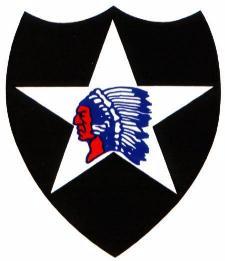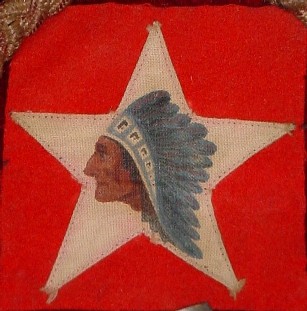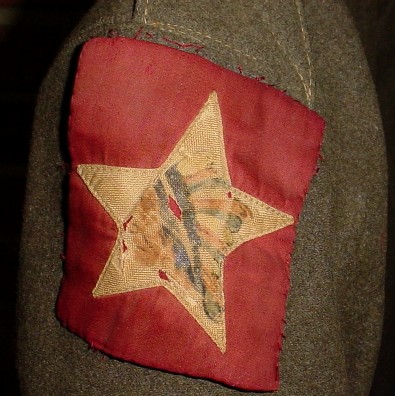THE PATCH HISTORY

The Second Infantry Division (Indianhead) patch is one of the most
recognized unit emblems in the U. S. Army because of its distinctive design and
80 years of proud service by its Warriors. The origin of the patch goes back
to the earliest days of the division's history. While training with the French
in 1917, Col. Herringshaw of the Service and Support Supply of the Second
Infantry Division noticed that the French trucks were marked with symbols
representing the unit to which each belonged.. He sponsored a contest among his
men to design a symbol for his trucks. There were three winners: first prize
winner was a design featuring an Indianhead: second prize went to a plain white
star and the third prize is lost to history. The colonel was not completely
satisfied and it is believed that , by chance, he combined the two symbols of the
white star and the Indianhead and liked what he saw.
Some theories say the single star represented the state of Texas, while other
claim the star is from the American flag. Regardless, the design was then sent
to command headquarters for approval. Brig. Gen. Omar Bundy, division
commander, not only approved the symbol but also ordered it put on his staff
car. The size and shape of the patch changed in October 1918 when Maj Gen. John
A LeJeune, the new division commander, decided the color of the cloth behind
each patch should represent the different divisional units. He also directed
the Indianhead was to be patterned after the Indian on the $10 gold piece.
After World War I, the background of the patch was adopted from the design of
the American shield. In World War II it finally took the shape, size, and color
it has today.

This particular patch is especially historic, in that it is the original patch under which the 2nd Division actually fought. LeJeune's redesign did not go into effect until after the Armistice was signed. There is a French monument to the 4th Brigade, with this design (square background field) carved into a boulder.
Even though the tips of the two bottom points of this patch are somewhat frayed, its otherwise pristine condition suggests that it was his "spare" patch. The patch that is actually on his uniform jacket (below) is badly faded & substantially more frayed.
